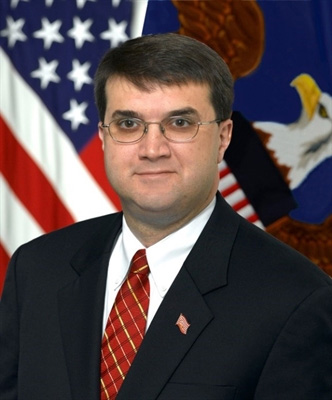 Coping with crisis and emergency situations is nothing new to VA. We trace our birth back to the Civil War, when an exhausted President Lincoln called on America to care for everyone who took up arms in that bloody battle. VA evolved in leaps and bounds when World War II called for a nationwide system to care for the men and women who liberated Europe. In 2020, VA faced a very different kind of crisis in the form of COVID-19, and it became VA’s responsibility once more to see our Veterans through it.
Coping with crisis and emergency situations is nothing new to VA. We trace our birth back to the Civil War, when an exhausted President Lincoln called on America to care for everyone who took up arms in that bloody battle. VA evolved in leaps and bounds when World War II called for a nationwide system to care for the men and women who liberated Europe. In 2020, VA faced a very different kind of crisis in the form of COVID-19, and it became VA’s responsibility once more to see our Veterans through it.
Many would agree that VA probably wasn’t up to this task just a few short years ago, after VA leaders were caught misrepresenting Veterans’ access to health care. Morale within VA was low, and polls showed most Veterans didn’t think very much of a bureaucracy that was failing them. Six years ago, a CNN poll showed that just 37% of Americans approved of VA’s performance.
But over the last few years, VA was reborn. Today our approval rating stands at about 90% for health care, and among our fastest growing population – women – we have an 86% approval rating.
Morale soared. From 2014 to 2016, VA was near the bottom of federal agencies in a survey of best places to work in the government. Now VA is sixth, and we expect to be fifth when new numbers come out in March.
We did it by listening to our employees and the Veterans we serve. I visited every state in the union and nearly every territory to talk to Veterans.
Veterans had been demanding options outside of VA care for years, and we delivered real, permanent choice to them through the MISSION Act. Now, millions of Veterans are getting care right in their communities and are finally at the center of their own health care decisions.
Giving Veterans choice didn’t mean the end of VA. Instead, we made VA more accountable and empowered VA staff to once more live up to the legacy of this department, and they rose to the occasion.
Recent studies show VA measures up to the private sector on access and quality.
Veterans liked what they saw and started voting with their feet. VA completed a record number of appointments in fiscal year 2019 – 59 million! – the same year the MISSION Act took effect. The more Veterans we served, the more Veterans trusted us. Trust in VA care hit a record high in April 2020.
VA achieved what all the experts in Washington said was impossible by rolling out a modernized health record that will make it easier than ever for health professionals to access Veterans’ medical history. No longer will Veterans have to lug boxes of paper records around, as my father did after serving in Vietnam.
We turned VA into a more welcoming place for women Veterans. VA now provides a full range of services for women Veterans and has a military sexual trauma coordinator at each of its medical centers.
We put staff, patients and visitors on notice that we have a zero-tolerance policy for sexual assault and harassment. Our ongoing campaign aimed at preventing these incidents is just one way of making a difference – another is the growing number of women we have in leadership roles who oversee our employees, 63% of which are women.
VA has tackled some of the most chronic problems facing Veterans with renewed energy. VA is working with states to reduce Veterans’ use of harmful opioids, which fell 48% over the last four years.
We’re working with local governments and companies to end Veteran homelessness. And VA is leading the effort not only to end Veteran suicide, but to begin a nationwide dialogue to prevent this tragedy among all Americans.
By the time COVID-19 hit, VA was a different organization than the one you read about in 2014 – we were ready for this mission. While the virus was a serious threat to many non-VA nursing homes, VA’s early actions to protect its most vulnerable patients resulted in far fewer infections at the homes we manage. We also used telehealth to keep in touch with patients at a time of social distancing.
VA’s performance during the crisis was so strong that 1,000 VA staff members deployed on more than 3,700 missions to assist non-VA health networks, including those that serve Native Americans.
VA has tested more than 1.3 million people for the virus and treated more than 125,000 Veterans. As of January 4, 2021, VA had administered more than 146,000 initial vaccine doses to Veterans and health care employees just a few weeks after it became available.
Before 2016, VA was falling short of Lincoln’s promise. Today, thanks to thousands of dedicated employees across the nation, VA has undergone the most transformational change seen since the end of World War II, and emerged from that process with renewed strength.
As a result, VA is now closer than ever to fulfilling the vision Lincoln had for our brave men and women who wear the uniform.





